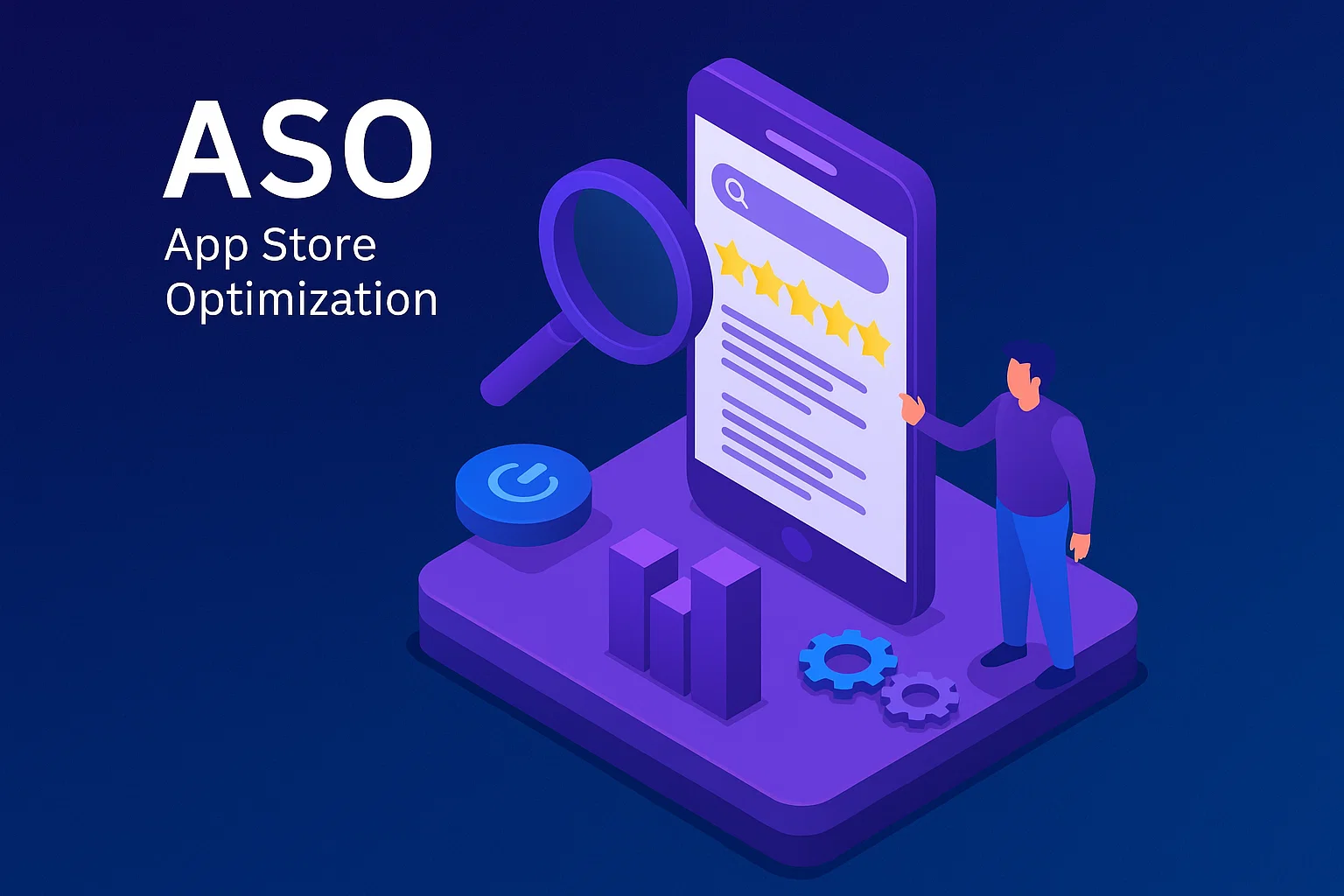

In 2025, the Google Play Store’s algorithm and feature set continue to evolve, making ASO (App Store Optimization) critical for app marketers and developers. With millions of apps competing, ranking your app faster means mastering every element of your app marketing strategy. This includes updated keyword optimization, standout visual assets (icon, screenshots, video), and strong engagement signals. We’ll cover the latest Play Store ranking tips – from 2025 algorithm changes to deep linking and retention – all with actionable steps to boost your mobile app visibility organically.
Google has introduced major algorithm updates and new store features in 2025, so ASO teams must stay agile. Such shifts cause global ranking volatility, meaning your app’s keyword positions and traffic can change suddenly. Experts advise monitoring key metrics (keyword ranks, organic installs, conversion rates) immediately after updates. This data-driven approach helps diagnose ranking drops or gains and adjust your ASO strategy quickly.
Frequent updates demand flexible ASO tactics. Teams should diversify user acquisition channels (not relying solely on organic search) because algorithm changes can dramatically affect visibility. Google itself is focusing more on user engagement and app quality: for example, they’ve begun flagging store listings with “warning” badges if an app shows poor retention or performance metrics. In short, 2025’s Play Store favors high-quality, engaging apps – so maintain excellent app stability and engagement to satisfy the algorithm.
Choosing the right search terms remains the foundation of ASO. Conduct thorough keyword research (using tools or the Play Console) to find relevant, high-intent keywords for your app. Update your app title (30 characters max) and short description (80 characters) with your most important keywords, and use the full 4000-character long description to weave in additional terms. Keep descriptions natural: Google penalizes obvious keyword stuffing. Top-ranking apps often use the maximum 4000 characters and repeat key terms multiple times – but do this sensibly. Focus on user intent and relevance: include variations and long-tail phrases (for example, “keyword optimization for apps” vs. just “apps”) to capture different search queries.
Visual assets like your app’s icon, screenshots, and videos have a huge impact on conversion rates. A well-designed icon that stands out in search results communicates your app’s theme instantly. Google Play also requires a “feature graphic” (used as a video thumbnail) – design this to entice users (even if you don’t use a promo video).
Google recently introduced new listing formats that savvy marketers should leverage. A “Hero Content Carousel” (rolling slider of images) lets you display three large images at the top of your listing instead of one. Use this to highlight seasonal updates or top features, but be aware it pushes the screenshot gallery and description down below the fold. Soon you can also add a YouTube Playlist Carousel on your page, linking multiple app videos from your channel. In April 2025 Google even tested audio samples for eligible apps, which showed a 3× install uplift in early trials. As these features go live, update your marketing assets to fit – e.g. prepare 3 strong banner images for the carousel or curate a few short app trailers for your YouTube playlist.
Ratings and user reviews are social proof that power both discovery and installs. High ratings significantly boost visibility: apps above 4.0 stars rank and convert much better. Most users won’t even consider a 3.x-star app, and even 4.4 vs 4.8 can make a big difference. To improve your rating, actively manage feedback. Encourage satisfied users to rate the app (for example, prompt them after a positive experience), and respond quickly to negative reviews. Addressing a complaint can often upgrade a 1-star to 4-star or higher. Keep your app stable (no crashes or lag) and release frequent updates to fix issues – stability and outdated UX are common reasons for low ratings.
Continuous testing and analytics are key to refining your ASO 2025 strategy. Google Play’s built-in experiments let you test store listing variations and see which drives the most installs. For example, compare two icon designs or screenshot sequences to a subset of users. Use the result to apply the winning design store-wide. Also track all relevant metrics: keyword rankings, Organic Impressions, Click-Through Rate (CTR), and install conversion. After each metadata update (typically a 4-week cycle), analyze the impact on rankings and traffic. Benchmark against competitors: see who’s ranking on your target keywords and analyze their metadata density and visuals. Being data-driven and responsive lets you gradually optimize performance beyond guesswork.
Expanding globally is easier if your app listing speaks the local language. ASO 2025 demands localization: translating your app name, description, keywords, and in-store text (like screenshots) into target markets. This dramatically increases your reach and installs without extra ad spend. For example, “Fitness Tracker” might become “トレーニング記録” (Japanese) or “Seguimiento de fitness” (Spanish) to capture local search traffic. On Google Play, always translate the full short and long descriptions (they’re indexed for search). Additionally, create localized screenshot sets – swap any text in the images for the local language. Doing so shows users you care about their market, which can significantly lift local conversion rates.
Deep links let external content or ads open your app to specific pages, improving user experience and retention. In 2025, Google Play encourages seamless promotion flows – for example, combining Inline Installs with optimized deep links to boost conversions. This means a user clicking an ad can install or open your app directly to the content they were shown. Implement Android App Links or Firebase Dynamic Links in your app and marketing materials (email, social, web banners) to take advantage of this. Deep linking also helps with re-engagement: you can route users to new features or content updates, which may improve retention metrics (a key ranking factor).
Google’s 2025 updates signal a shift toward valuing engagement over pure acquisition. Features like the Play Store’s Engage SDK and “Collections” (full-screen widgets) are designed to re-capture users. To align with this, focus on retention tactics. For example, design push notifications and in-app messages with clear value (and A/B test them) to avoid annoying users and boosting churn. Leverage in-app events and new content as reasons to update your listing or re-market to users – remember, Google often highlights ongoing events in store searches. Monitor retention metrics (day-1, day-7 rates) in the Play Console’s Android Vitals; apps with poor retention may be deprioritized. Reward loyal users (via in-app rewards or loyalty programs) and ensure a smooth onboarding to keep your retention high. For mobile games, adopt Google’s focus on engagement features: implement achievements and leverage Play Points, as these new hooks can keep users active and boost your app’s prominence.
 Stay Updated: Keep an eye on Google Play announcements and adapt quickly. Use tools to detect algorithm shifts and adjust keywords or visuals accordingly.
Stay Updated: Keep an eye on Google Play announcements and adapt quickly. Use tools to detect algorithm shifts and adjust keywords or visuals accordingly. Optimize Keywords: Continually refine your metadata with relevant, high-traffic terms (but avoid stuffing). Use long-tail keywords that match search intent and test different title/description combinations.
Optimize Keywords: Continually refine your metadata with relevant, high-traffic terms (but avoid stuffing). Use long-tail keywords that match search intent and test different title/description combinations. Invest in Design: Create a unique icon, compelling feature graphic, and engaging screenshots. Test creative variations via A/B tests. Ensure assets reflect any new features or trends.
Invest in Design: Create a unique icon, compelling feature graphic, and engaging screenshots. Test creative variations via A/B tests. Ensure assets reflect any new features or trends. Boost Ratings: Encourage 4–5★ reviews. Prompt happy users to rate, fix issues highlighted in reviews, and publicly respond to feedback. A small rating boost can significantly increase installs.
Boost Ratings: Encourage 4–5★ reviews. Prompt happy users to rate, fix issues highlighted in reviews, and publicly respond to feedback. A small rating boost can significantly increase installs. Use Data: Regularly review performance data. Monitor ranking reports, conversion funnel metrics, and retention stats. Adjust your listing copy and strategies in small increments and measure impact.
Use Data: Regularly review performance data. Monitor ranking reports, conversion funnel metrics, and retention stats. Adjust your listing copy and strategies in small increments and measure impact. Localize: Expand into new regions by translating your store listing and app into local languages. Localized text and images show users you cater to them and dramatically increase downloads.
Localize: Expand into new regions by translating your store listing and app into local languages. Localized text and images show users you cater to them and dramatically increase downloads. Leverage Deep Links: Implement and promote app links in ads and social to create frictionless install and engagement flows. This not only converts better but can improve engagement metrics.
Leverage Deep Links: Implement and promote app links in ads and social to create frictionless install and engagement flows. This not only converts better but can improve engagement metrics. Focus on Retention: Keep users coming back. Use notifications, in-app events, and rewarding UX to improve engagement (an explicit ranking factor). A strong retention rate can push your app ahead in the Play algorithm.
Focus on Retention: Keep users coming back. Use notifications, in-app events, and rewarding UX to improve engagement (an explicit ranking factor). A strong retention rate can push your app ahead in the Play algorithm.By combining these strategies, you can significantly improve your app’s visibility on Google Play in 2025. Remember, ASO is an ongoing process – stay data-driven, experiment often, and iterate on every part of your store listing and app experience. With the right mix of keyword optimization, compelling visuals, and user engagement tactics, you’ll rank your app faster and attract more organic downloads in the competitive mobile market.